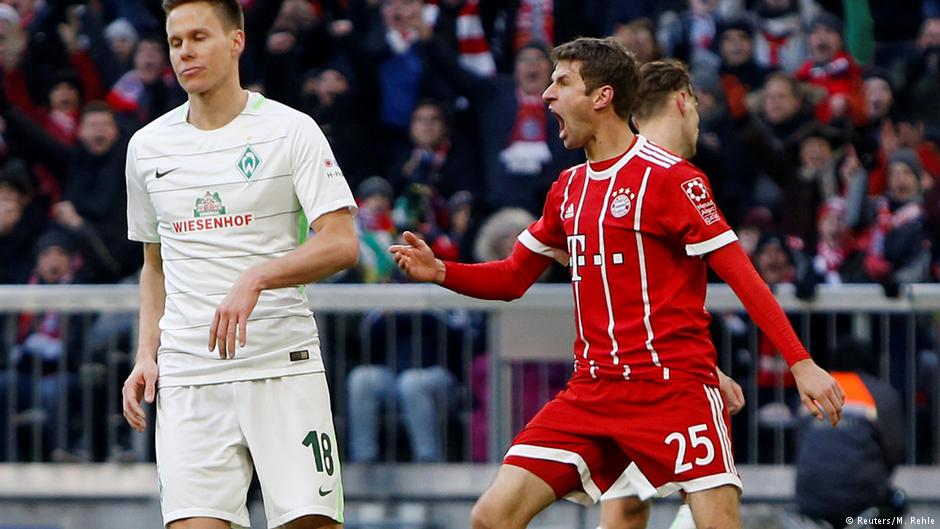How shoudl top German athletes be funded to bring back the medals? It’s been a hotly-debated topic in Germany for the past two years. There are a number of different models that could be been adopted.
The Olympic Games are the highlight of the sporting calendar, but the view of the executives goes well beyond that. The most important project is in its final phase: the highly-controversial reform of sports funding in Germany.
“The medal outcome in Rio can’t be so bad or not so good that it should divert us from our course of a sustainable and successful system,” said president of Germany’s Olympic Committee (DOSB), Alfons Hörmann.
In September, the key points will be nailed down before the Sports Committee of Germany’s Bundestag considers the reforms on October 19.
But which course of action is sustainable and most likely to be successful? The answer is not straightforward. In the current calendar year, more than 160 million euros ($177 million) has flowed into the top level of German sport. The backer is the Federal Interior Ministry. The recipient and custodian of the sums are the sports associations and their umbrella organizations of the DOSB. The criticism of the current system covers several points. The funding targets are so wide, that the leading athletes can’t break them internationally.
Double structures in the organization of national sports associations tied with the federations of each sport would swallow up money and complicate responsibilities. For more than two years, Interior Minister Thomas de Maziere and his ministry have wrestled with the DOSB about how that could be more efficient. Because it’s about money – a lot of it – and that means power, which will be discussed in secret.
Just a hint about where we are headed is clear in Hörmann’s last interview with DW. We need at the club level, more full-time employees that are dedicated to the topic of sports development.” It can be assumed the professionals will take over and the spending will be concentrated. There are international examples of that.
Think outside of the box
Great Britain as a medal workshop – the Brits earned this reputation after finishing third place at the London 2012 Olympic Games. The ‘conveyor belt’ system could therefore be considered as a blueprint for reform. However, width and versatility don’t play a key role. Funding is exclusively for sports with medal opportunities. In the four years before Rio, the UK Sports association ploughed in 440 million euros – a third of the money comes from lottery funding, two-thirds from the government. The state share should increase by 29 percent by 2020.
“We want to be better than in Beijing,” said Simon Timson, the performance director at UK Sports. “It’s a realistic goal to challenge the most successful Summer Games in our history. The long-term orientation towards success is also reflected in the income of the top athletes again. Those from Britain, who belong to the best in the world, are entitled to 33,500 euros. By comparison, Germany’s Sports Aid charity pays a maximum of 18,000 euros – but promotes three times as many athletes.
In Switzerland, the athletes earned less than 14,000 Swiss francs, the equivalent of 12,900 euros. It is clear how much idealism is necessary and the sums demanded to dedicate your whole life to sport. One way in Switzerland, as well as in Germany, is a commitment in the sports promotion companies of the military. In the Bundeswehr there are currently 744 active athletes who can train for their future careers as well.
USA: No state funds, but strong college sport scene
Without any state funding, the National Olympic Committee (USOC) must fund effectively. The association’s revenue comes from sponsors and the money is distributed to the individual sporting bodies. In the four-year cycle from 2009-2012 this figure was $568 million. The principle of their distribution model is simple: those who win medals will be funded. As a consequence, the rich associations get richer, others go broke.
The situation is intensified by the fact that organizations of prestigious sports like swimming or gymnastics, popular in the U.S., see their balance sheets grow tenfold from sponsorship. However there is a lot of controversy in the U.S. around funding reforms. UOSC CEO Scott Blackmun announced this year that he wanted to analyze the data around the distribution of funds.
You have to look at things as an investor, Blackmun told the Sports Business Journal, “who don’t make decisions because it’s fair, but because they want the best results.”
The biggest plus of youth development in the United States is the nation-wide competition of colleges. Whether it’s basketball, wrestling, gymnastics or swimming, universities in the United States compete for talent with scholarships and offer highly-professional training conditions.
There’s little need to look at Russia or China. While both are accustomed to success, to find a centralized, state-controlled system for talent and funding to ultimately compete with world class opponents is not a feasible model for Germany. Particularly in the case of Russia, following the recent WADA report that also claimed systematic doping is a form of state funding.




